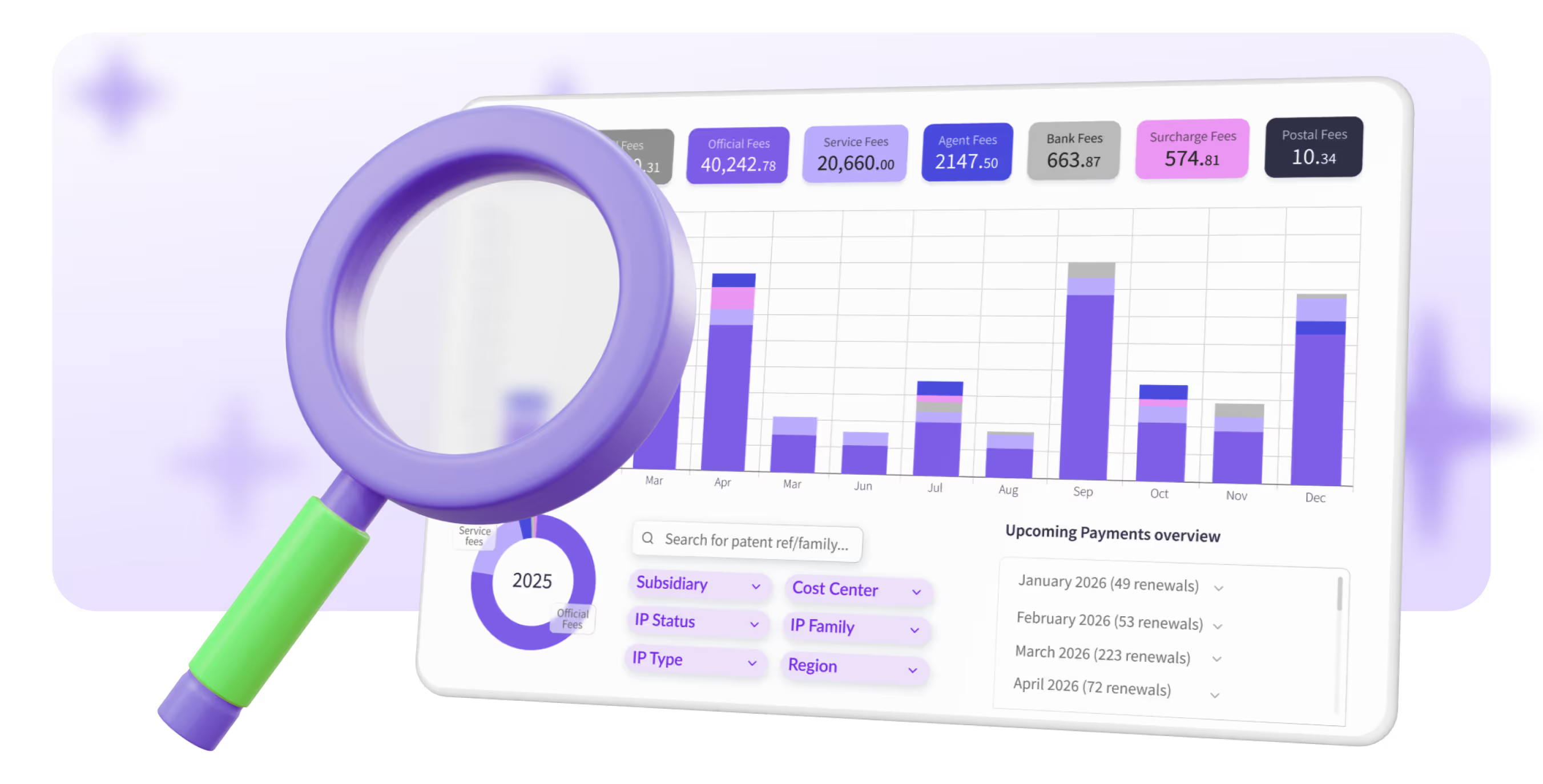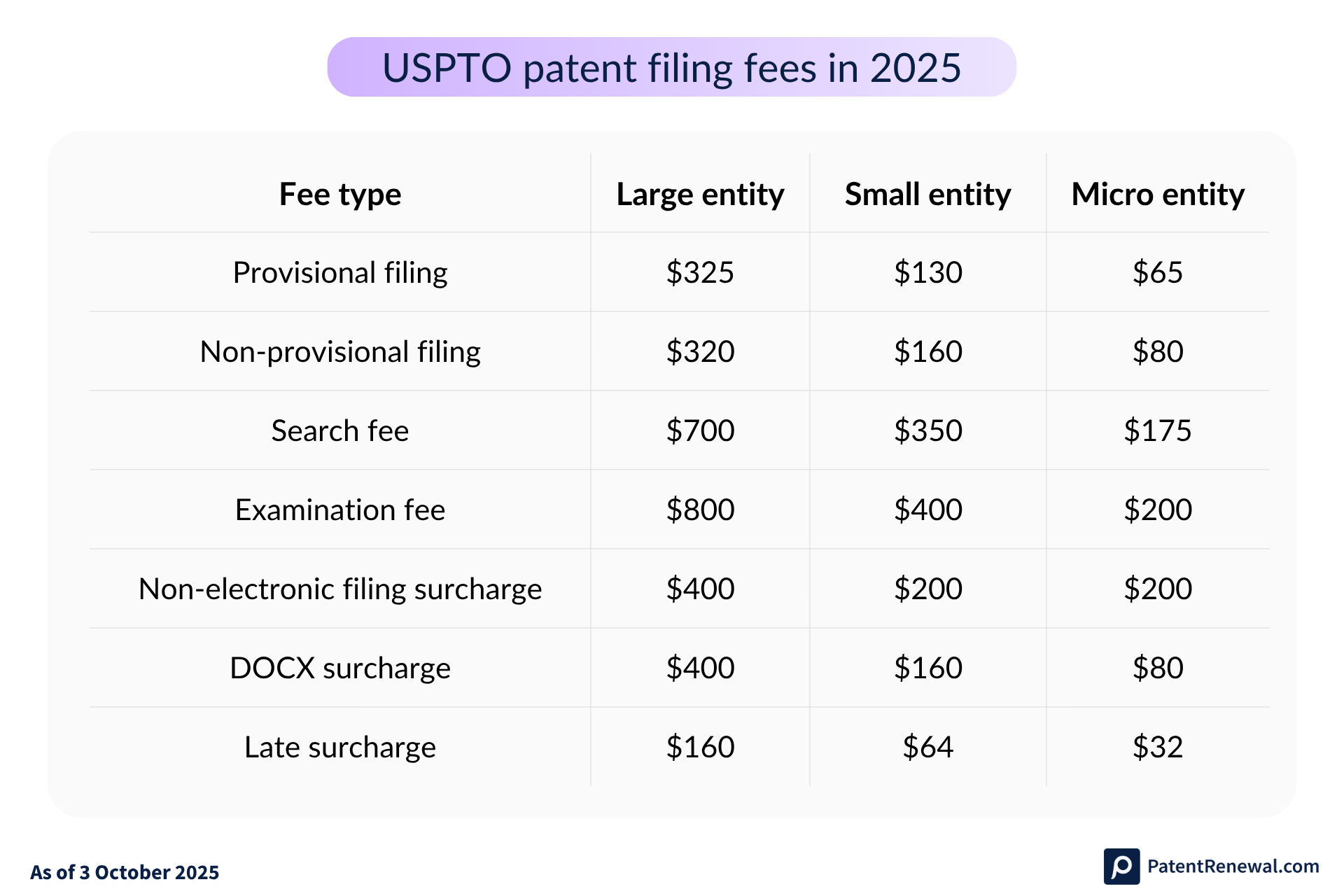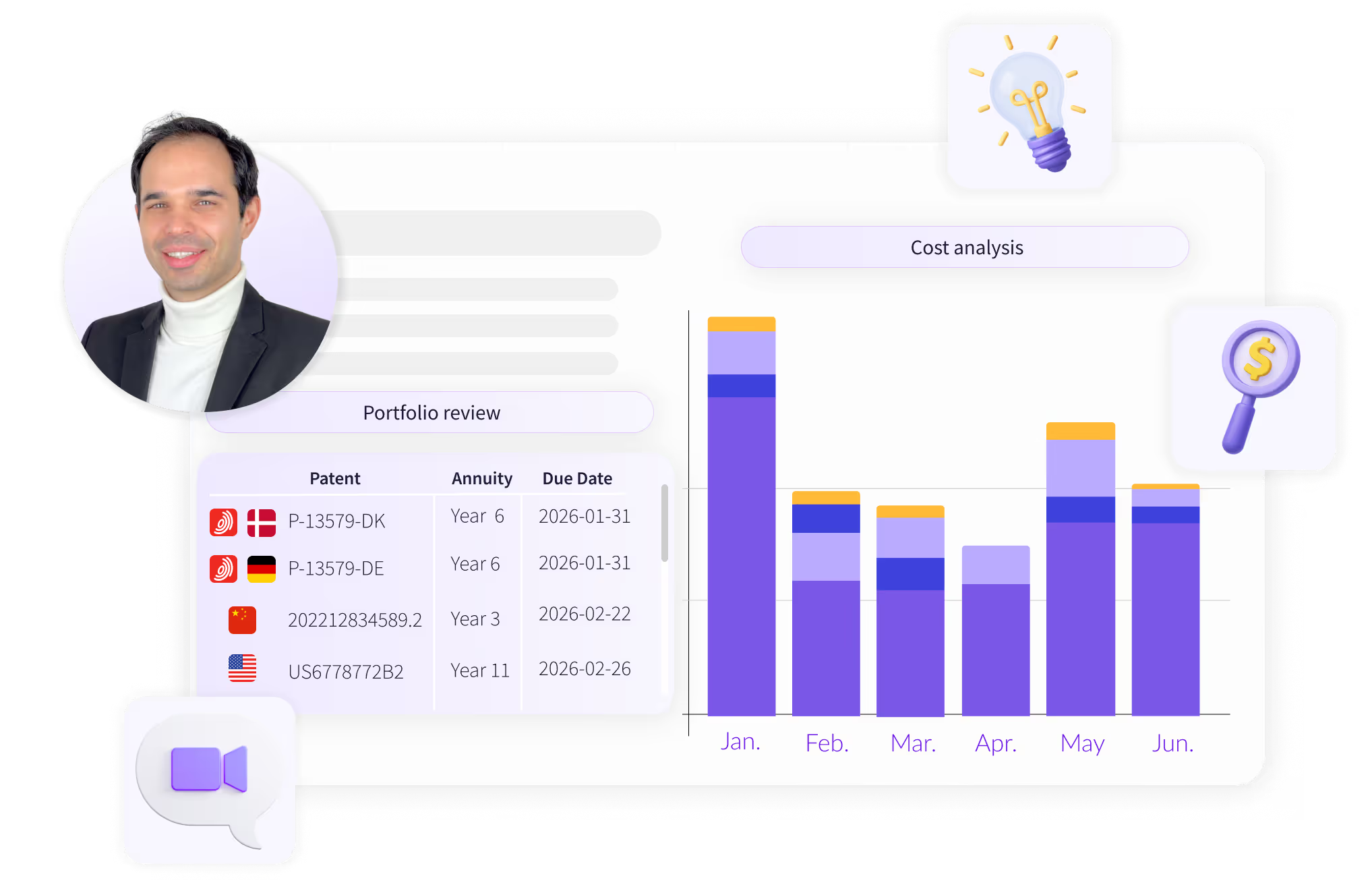TRY OUR NEW (FREE) IP RENEWAL COST CALCULATOR
Calculate
.png)
If you’ve ever wondered whether to file a provisional patent or jump straight to a non-provisional, you’re not alone. But the path is not always straightforward for inventors and companies in the US.
The choice affects how quickly you secure protection but also how much you spend upfront, when your rights become enforceable, and how your long-term patent maintenance obligations will look once the patent is granted.
This guide covers what each application is, how they compare, fees as of 2025, common mistakes, and how to decide which path to take.
A patent application is a legal request for the exclusive rights to an invention. It includes a detailed description of how the invention works and what makes it new. In the United States, inventors can choose between filing a provisional patent application or a non-provisional patent application.
Patent application is only successful if the invention fits into one of the eligible categories and meets the standards of novelty, utility, and non-obviousness.
But not everything is eligible for a patent. In the U.S., you can patent:
What you cannot patent are abstract ideas, laws of nature, mathematical formulas, or things that are purely artistic without practical application.
Beyond the paperwork, filing a patent application gives inventors and businesses strategic advantages:
A provisional patent application is a temporary patent filing that allows you to secure an early priority date for your invention. It does not require claims, which means it is faster and simpler to prepare compared to a full non-provisional patent application.
The patent filing fees are lower, and the application is not examined by the United States Patent and Trademark Office (USPTO). A provisional automatically expires after 12 months, and it never matures into a granted patent on its own.
Benefits: They include the ability to mark your invention as “patent pending,” the chance to delay higher costs, and the opportunity to continue refining the invention. However, if your provisional does not fully describe the invention, you risk losing protection for features that were not disclosed. You have to follow up with a non-provisional application within the 12-month period to keep your priority date.
Limitations: you should keep in mind that you cannot use a provisional for design inventions, it cannot claim priority to another U.S. or foreign application, and once filed, the content cannot be amended except for very minor corrections. That’s why it’s important to prepare a complete and accurate description from the start.
When you file a provisional patent application, you keep things simpler than a non-provisional but there are still rules to follow.
Here’s what you need:
A provisional application is simpler than a non-provisional application because it skips many formalities.
You don’t need to:
“The most significant risk with provisional filings is incomplete disclosure. If the invention is not described in sufficient detail, later claims in a non-provisional may not receive the benefit of the earlier date. This could leave room for competitors to file similar applications. Best practice is to treat a provisional with the same rigor as a non-provisional. Include detailed descriptions, drawings, and variations to prevent gaps. Work with professionals who understand the technical and legal requirements so that the provisional builds a strong base for the future application.” - Brian Joslyn, Owner, Joslyn Law Firm
A non-provisional patent application is the formal submission that the USPTO examines. This is a standard patent application, which is commonly understood as a patent application on global terms.
Once filed, a non-provisional patent application enters the examination process. A patent examiner reviews it for novelty, utility, and non-obviousness. If successful, it results in a granted U.S. patent. The term of a utility patent is 20 years, counted from the patent filing date of the non-provisional, not from the provisional patent filing date.
Because this is the application that can grant enforceable rights, drafting it carefully is essential. As poorly written claims or missing technical detail can weaken the scope of protection.
A complete non-provisional includes the right pieces, in the right order. You file:
For non-provisional patent filings on or after January 17, 2024, you must submit the description, claims, and abstract in DOCX format to avoid an extra fee.
You can file a non-provisional directly if your invention is ready, or you can file a provisional first if you need extra time to develop your idea.
If you choose to start with a provisional, you must file the non-provisional within 12 months to keep the earlier priority date. If you miss that deadline, the USPTO allows a limited 14-month restoration window if the delay was unintentional and you pay the petition fee.
Non-provisional applications are typically published 18 months from the earliest priority date. If you do not want your invention published, you can file a non-publication request, but you can’t file the same application abroad if you choose this option.
Keep in mind that the 20-year patent term is always measured from the non-provisional filing date, not from the provisional. Filing a provisional secures your early priority date, but it does not extend the overall lifetime of the patent.
“Excessive application of PPAs has the potential of making a patent portfolio weak. The flawed version of PPA can be used to make the obscure claims against the potential patent privileges. As a business lawyer, I have observed the ways these misconceptions might interfere with the patent strategy process and I should take the PPAs as the initial step in a larger more comprehensive filing process.” - Nick Heimlich, Owner and Attorney, Nick Heimlich Law
“A company I worked with had a fully developed software innovation, knew it was core to their business model, and wanted strong protection as quickly as possible. Jumping straight to the non-provisional avoided delays, started the examination process right away, and sent a strong message to competitors that they were serious about locking down their rights. So the choice really depends on the client's goals and stage of development: do they need speed and certainty, or flexibility and time?” - Prakhar Rai, Attorney, My Legal Pal
Even small errors in your patent filing can cost you protection or add unnecessary expenses. Here are the most common pitfalls to watch out for:
As of 2025, USPTO fees are as follows:
Core fees:
Additional fees you may face:
Surcharges:

Patent maintenance fees begin once your patent has been granted. While the non-provisional filing starts the examination process, ongoing maintenance costs apply only after issuance.
Once your patent is granted, you’ll need to manage regular patent maintenance to keep your rights active, across multiple countries and due dates.
PatentRenewal.com simplifies this with software that automates every patent maintenance, keeps all deadlines on track, and gives you a clear online overview of your entire patent portfolio on a single platform.
You’ll always know what you’re paying, when patent maintenance is due, and how your budget is being used.
With full cost transparency and savings of up to 50%, you can focus on innovation while we handle the complexities. Discover how PatentRenewal.com can simplify patent maintenance.
If you don’t file a non-provisional within 12 months, the provisional expires. In some cases, you can restore the benefit by filing within 14 months, but only if you petition the USPTO, pay a fee, and explain that the delay was unintentional.
Patent maintenance fees (also called patent maintenance fees in the U.S.) start after your patent is granted. In the U.S., they are due at 3.5, 7.5, and 11.5 years from the date the patent was granted.
No, a provisional is optional. You can file a non-provisional first if your invention is ready with full claims. Many inventors use a provisional as a cost-effective placeholder while finalizing details.
Yes, you can file a provisional on your own using USPTO forms and Patent Center. However, if your description is incomplete or unclear, you risk losing protection later. Many inventors choose professional help to make sure the application fully supports future claims.
A granted U.S. utility patent from a non-provisional application typically lasts 20 years from the non-provisional filing date, as long as you keep up with maintenance fees.
As of 2025, a provisional filing fee starts at $65 for micro entities, while the core non-provisional fees (filing, search, and examination) add up to $1,820 for large entities ($910 for small, $455 for micro). Additional claim, size, and surcharge fees may apply.
Patent filing is the process of submitting your application to secure rights to your invention. Patent maintenance (or maintenance) is the ongoing payment of fees after your patent is granted to keep it legally in force.
No, you cannot add new material once a provisional is filed. You can only make very limited corrections. If you need to include more details, you must file a new provisional.
Interested in a free IP renewal consultation? Benchmark your current IP renewal setup and costs against market standards.
